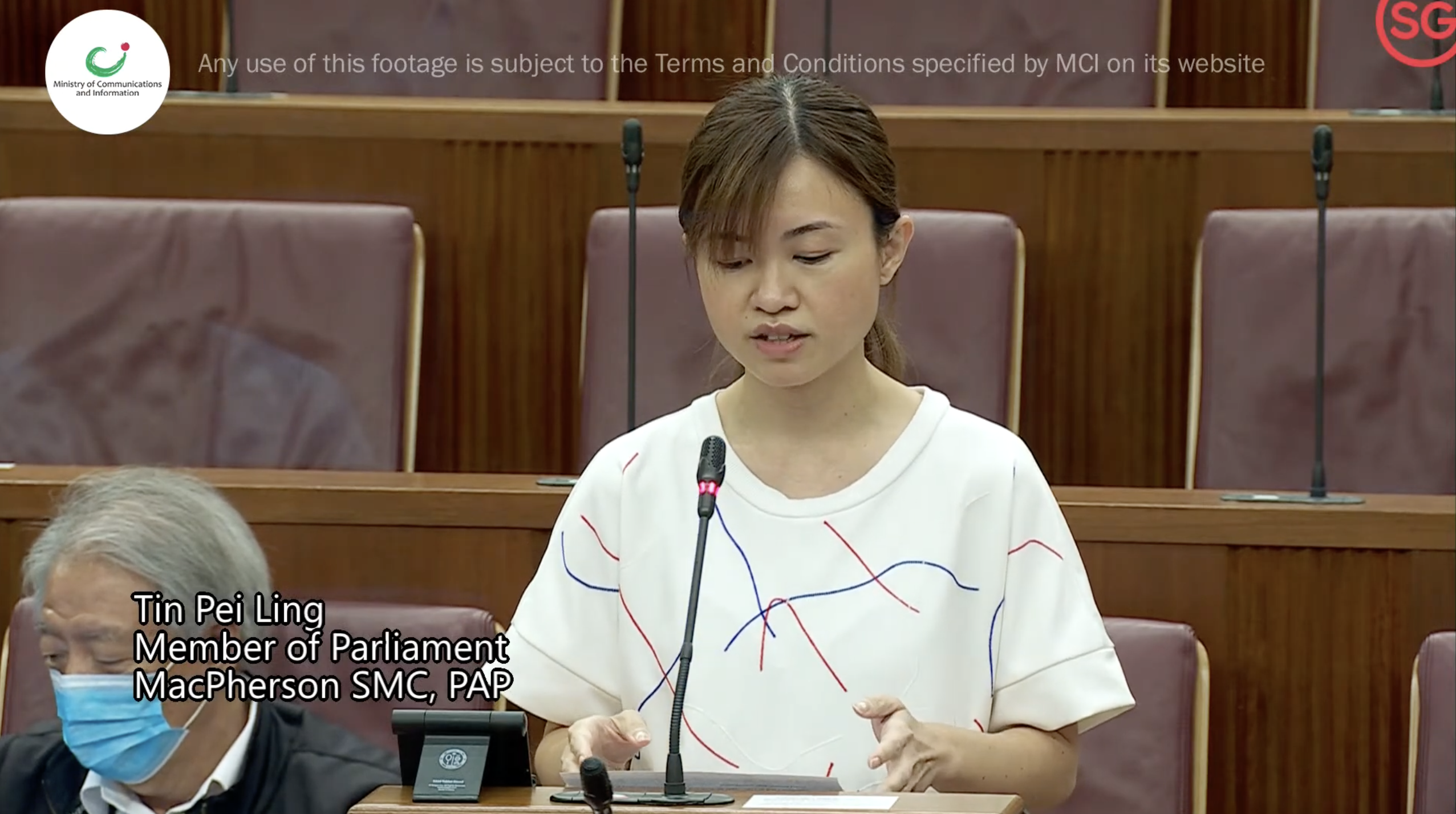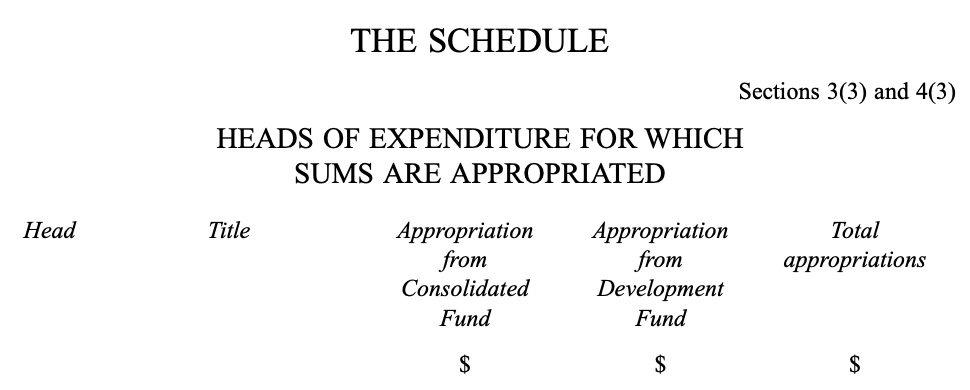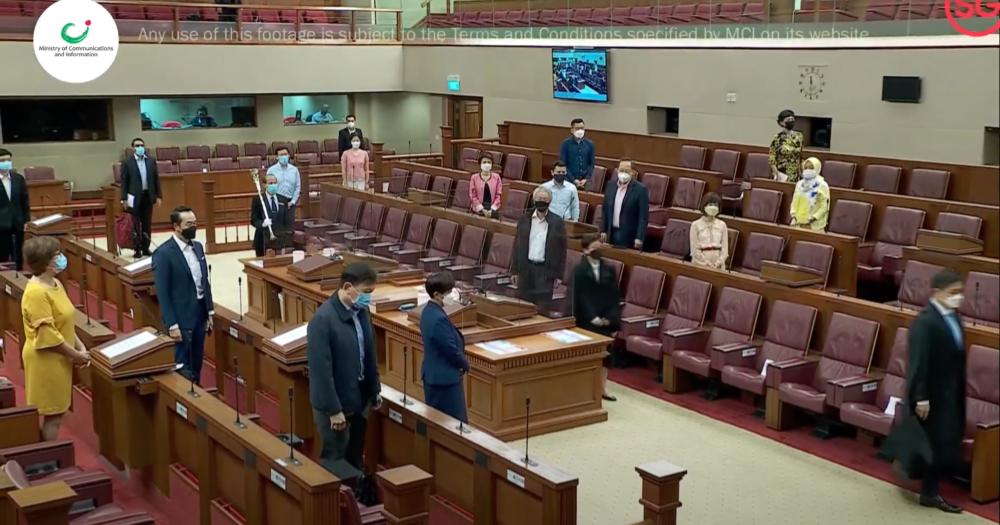Follow us on Telegram for the latest updates: https://t.me/mothershipsg
The Committee of Supply (COS) debates are in full swing since they started on Mar. 2, after Parliament voted in favour of Budget 2022.
This year, the first Member of Parliament (MP) to speak during the COS debates was the PAP's Tin Pei Ling.
"Chairman, I beg to move that the total sum to be allocated for Head U of the Estimates be reduced by S$100," she said, just before diving into a spiel about the benefits of the Smart Nation initiative, as part of her "cut" on "Smart Nation, Safe Transactions".

"The Estimates" refers to the estimated expenditure of various government ministries and entities in the 2022 Supply Bill.
In the Supply Bill, "Head U" is the estimated expenditure for the Prime Minister's Office (PMO)— a sum of S$1,392,042,900.


In other words, Tin was proposing that PMO's budget for the upcoming financial year be reduced from S$1,392,042,900 to S$1,392,042,800 instead.
She wasn't the only one to do this.
With the notable exception of Non-Constituency Member of Parliament Leong Mun Wai (who suggested rearranging various activities and budgets under several ministries), you might have heard many other MPs similarly asking for a specific reduction of S$100 from various other ministries' estimated expenditure.
Why do MPs ask for S$100 budget cuts?
The short answer: Convention.
According to the Budget and Parliament websites, MPs have the opportunity to ask for a symbolic S$100 "cut" to a ministry's estimates during the COS debate, in order to raise areas of concern over that specific ministry's policies.
As Tan Chuan-Jin, the current Speaker of Parliament, wrote in 2019:
"During the COS debate, MPs will examine each Ministry’s plans. To raise areas of concern over a Ministry’s policies, an MP must first propose a nominal “cut” of $100 to the Ministry’s Estimates. This action gives the MP a peg to query the details of the Government initiatives that will be supported by the projected expenditures. When the Minister has satisfactorily addressed this feedback, the MP may withdraw his “cut”."
In other words, the MPs are not actually asking for the budgets to be reduced — they are simply using the suggested budget cut to signal their intention to speak.
This is why, when Tin was later asked if she would like to withdraw her amendment (i.e. to leave PMO's estimated expenditure unchanged), she did so, by asking for "leave" (or, permission), which was duly granted by the majority of MPs — a process that was also followed by other MPs who had proposed "cuts" to various ministries' budgets.
But where did this very specific set of procedures come from? Here's what we found out from trawling through Parliamentary history.
Why S$100, and not S$1,000 or S$10?
With ministries' budgets regularly surpassing the billion- or even 10-billion dollar mark, wouldn't a S$1,000 cut still be a "token amount"?
A quick look through the records of past Budget proceedings shows that smaller token cuts of S$10 have been proposed, even before Singapore's independence.
S$10 cuts were also common even several decades later, in the 2000s.
Non-token cuts were also suggested in the pre-independence Legislative Assembly (the precursor to today's Parliament), with one early example being a cut of S$85,000 suggested by MP for Bukit Panjang Goh Tong Liang, in 1955.
Goh had done so in order to voice his opposition to public funds (specifically, the sum of S$85,000) being allocated to the Singapore Family Planning Association (FPA), which gave advice to families on spacing out or limiting the number of their children, and provided facilities for contraception.
Suggesting that the S$85,000 budget be cut by S$85,000 was, in effect, a proposal that the entire item be struck off the list of things that the government would fund in the upcoming year.
A spirited debate ensued, culminating in a vote where the majority of MPs voted against Goh's suggestion, allowing the FPA budget to stand untouched.
Practice of suggesting token "cuts"
The practice of suggesting token cuts appears to have become the standard practice since Singapore's independence.
From 1965 onwards, only token cuts of either S$10 or S$100 were proposed — although strong opposition to fiscal policies was still heard from time to time.
The amount for a token cut appears to have been standardised as S$100, from sometime in the 2000s.
Indeed, the current Standing Orders of the Parliament of Singapore says that MPs can propose a reduction of "a token amount of S$100" for any head of expenditure.
Paragraph (4) of Standing Order No. 92 reads:
"Any Member may give notice of his intention to move an amendment to any head of expenditure in the Estimates to reduce by a token amount of $100 the total sum to be allocated for that head. Debate upon this amendment shall be confined to such matters relating to the public services set out in the Estimates as shall be indicated by the Member in his notice of such amendment..."
Thus, it appears that the practice of suggesting cuts to a particular set of expenditures is something that helps to keep debates organised, and focused.
Stories from the ongoing Committee of Supply debates:
Follow and listen to our podcast here
If you like what you read, follow us on Facebook, Instagram, Twitter and Telegram to get the latest updates.
